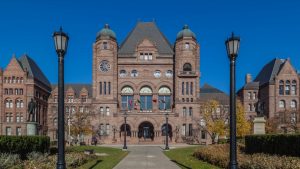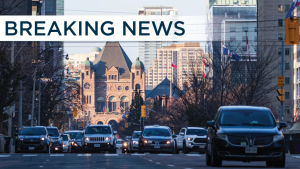Will 2019 finally be the year construction starts on the LRT in Hamilton?
It could be, Kris Jacobson, director of the City of Hamilton’s LRT project office, told members of the Hamilton-Halton Construction Association attending the HHCA’s annual construction forecast seminar on Jan. 24. All it will take is for the Ontario premier to fire the starter’s pistol.
“One common theme is, we are all waiting for a letter from the province,” Jacobson said, in reference to prior presentations at the HHCA event where it was noted major project decisions are on hold pending the Ontario government’s review of spending.
After pro-LRT Hamilton Mayor Fred Eisenberger was re-elected in the fall, Premier Doug Ford said, “I’m a strong believer, he was democratically elected and when people democratically elect someone, he wants an LRT, he’s going to get an LRT.”
Since then Hamilton has been waiting for official word that the $1 billion in funding pledged by the previous Liberal government is confirmed. The mayor recently told local media the government advised him provincial officials would be visiting to undertake fact-finding before any go-ahead would be given.
Three consortiums emerged from an RFQ last year and have been invited to submit proposals as part of an alternative-financing and procurement design, build, finance, maintain, operate procurement process. The assets will be owned by Metrolinx and the winning team will operate and maintain the 14-kilometre system.
Jacobson said in an interview that only after the province gives the green light would the winning team be announced, and it’s possible utilities relocation could start late in the year, with full project construction launched next year. Completion is targeted for 2024.

Hamilton’s constructors and other stakeholders are eager for the project to get going, said Sue Ramsay, HHCA general manager.
“The number of applications the City of Hamilton has received along the corridor is massive,” she said, referring to interest in transit-oriented developments. “There is confidence the project is going to happen.
“In Toronto you want to live by the subway. Well in Hamilton you’ll want to live by the LRT.”
Jacobson admitted the uncertainty over the launch has had an effect on planning.
“Any time there is a level of uncertainty it creeps into the procurement process,” he said. “The procurement process is complicated to begin with. You set a timeframe and you hope to meet that timeframe, but just given the complexities of the project you tend to see the process drag out a little bit further as new ideas are thought of. Look at Finch, Hurontario, other LRT projects, all have been extended over time as they continue to refine the project.”
The delay also means project details remain unknown, given that the project will be delivered through a Project Specific Output Specification process — meaning the owners outline desired outcomes and the bidders are expected to present their own set of solutions to achieve the outcomes.
“We know there are multiple ways of doing this,” Jacobson explained. “We have an idea of how it can be done, we set the parameters of what exactly we want to see at the end of the day, we will allow them in certain areas to come up with their design and that is a part of project I am excited about. We will leverage their expertise to see how they will do it, within the confines of what we want.”
The biggest challenge, he said, requiring the most innovative solutions, will be keeping the corridor operational during the build.
“From a technical point of view the greatest challenge is trying to fit everything that we have to relocate into the small space,” he said. “Beyond the watermains, sewers and roads we have to relocate almost every utility in there as well.”
Besides the LRT itself, with its 17 stations, other components of the build include 14 kilometres of sewer pipe, 16 kilometres of watermains, 14 kilometres of road reconstruction, 28 kilometres of sidewalk, 62 traffic signals, a new Longwood Road Bridge, a new Queenston Road bridge deck, an extension of Frid Street and an operations, maintenance and storage facility.
Unfortunately, said Jacobson, some of that work will mean replacing infrastructure just recently built.
“We are replacing some portions at the end of their useful life, but they had just redone the road near Eastgate, that asset was only five years old,” he said.
The three teams invited to submit proposals are Mobilinx, with teams members Astaldi, John Laing, Hitachi-Ansaldo, Amico, Transdev, Bot, IBI, Daoust Lestage, Morrison Hershfield, Exp Services and Arcadis; Ei8ht Transit, with EllisDon, Fluor, Bombardier, WSP/MMM, Hatch and Gh3; and Cityline Transit Group, with ACS, Aecon, CRH, TIAA, Dragados, Dufferin, Parsons, HDR, Amec, RDHA and Serco.










Recent Comments
comments for this post are closed